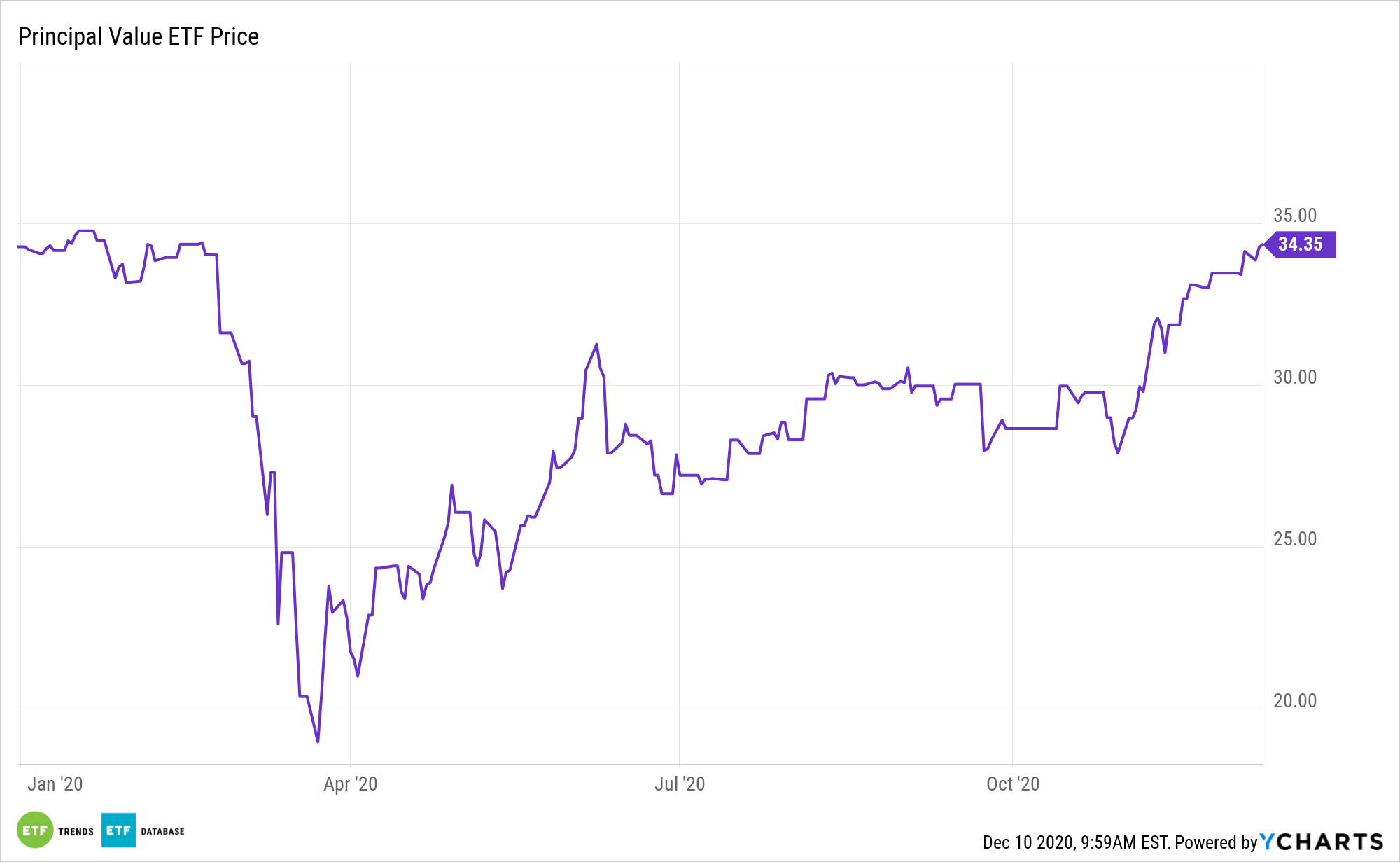Sometimes, prosaic approaches to factor investing leave investors wanting more. That’s long been the case with value stocks, but the Principal Value ETF (PY) provides a unique lens to value, one that could serve investors if the recent rebound by the factor is persistent.

PY seeks to provide investment results that closely correspond to the performance of the Nasdaq US Shareholder Yield Index. The index uses a quantitative model designed to identify equity securities (including value stock) of mid- to large-capitalization companies in the Nasdaq US Large Mid Cap Index (the “parent index”) that exhibit high degrees of sustainable, shareholder yield.
“(Buy the cheaper stocks), underperformed significantly everywhere. To be clear: The underperformance of multi-factor equity strategies in 2020 has been more or less entirely a function of a bad year for value,” writes BNP Paribas research.
PY is proving it’s a credible alternative to traditional value strategies. Year-to-date, the Principal ETF is in the green while the S&P 500 Value Index is lower. Over the past month, PY is beating that index by almost 1,000 basis points.
Value Stocks in a Low Yield Environment
Value stocks tend to trade at a lower price relative to their fundamentals (including dividends, earnings, and sales). While they generally have solid fundamentals, value stocks may have lost popularity in the market and are considered bargain-priced when compared with their competitors.
PY’s approach to value is relevant in today’s low yield environment where many investors are embracing lower quality companies. The three components of shareholder yield are good measures for shareholder friendliness.
“This is not the first time we have seen an underperformance of value. Value lagged significantly during the run-up to the dotcom equity bubble in 1998/2000. It then recovered. This year, the underperformance of value has been particularly severe,” notes BNP Paribas. “However, since early November, we have seen something of a correction with value outperforming growth. It remains to be seen if this is temporary or a change in the trend.”
PY is already proving that it doesn’t need a substantial value rotation — which some investors don’t think will come to pass — to outperform traditional value strategies.
For more on innovative portfolio ideas, visit our Nasdaq Portfolio Solutions Channel.
The opinions and forecasts expressed herein are solely those of Tom Lydon, and may not actually come to pass. Information on this site should not be used or construed as an offer to sell, a solicitation of an offer to buy, or a recommendation for any product.

